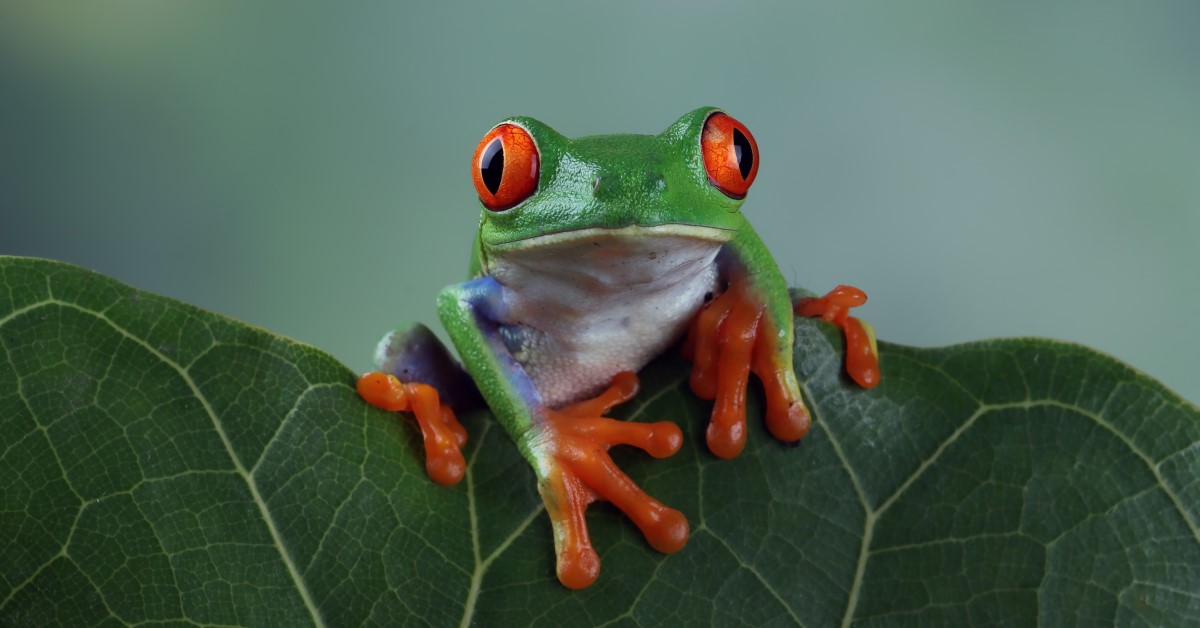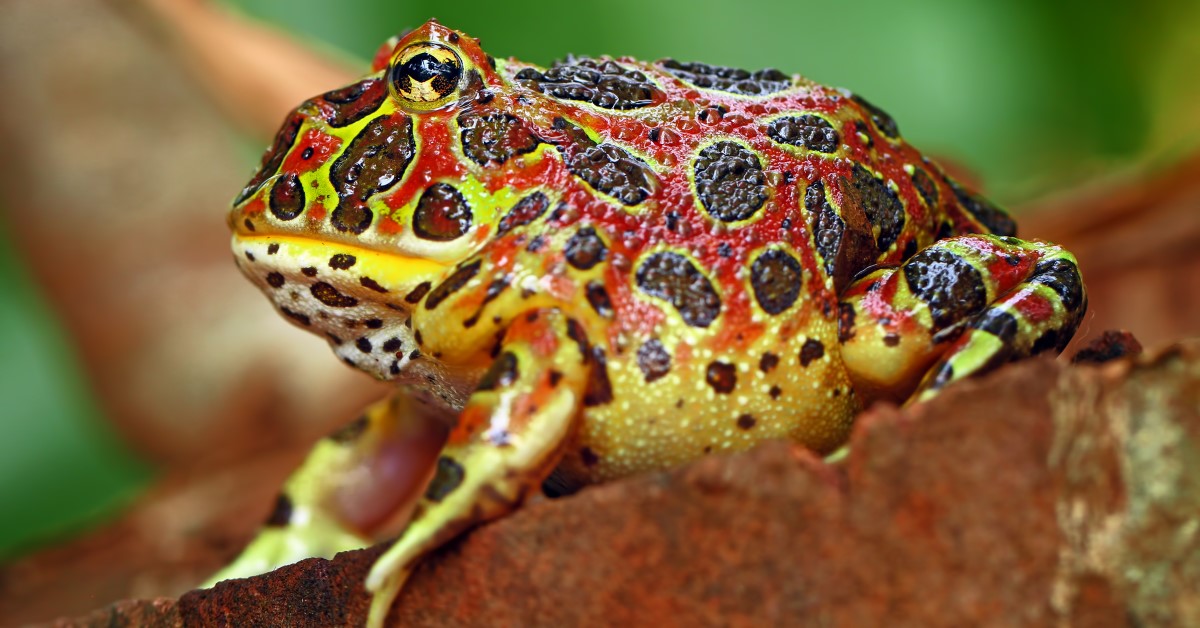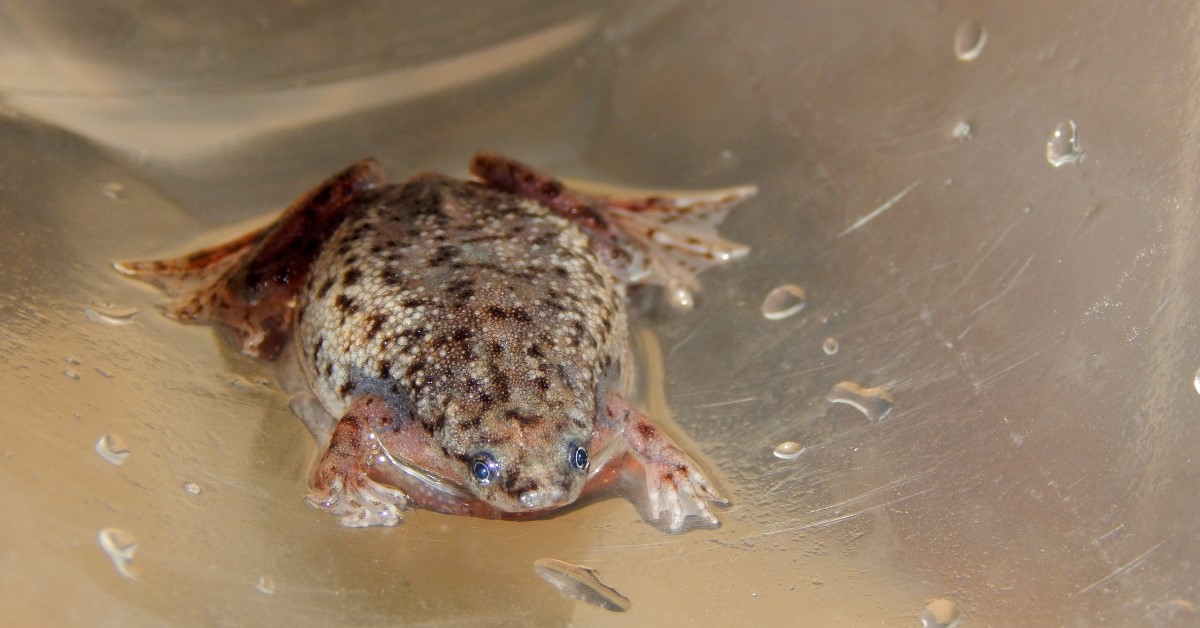Best Frog Species for Beginners
Many species of frogs are low-maintenance, docile, and fun to watch, making them great pets for beginners.

Looking for a pet that’s inexpensive, easy to care for, and relatively low-maintenance? Consider a pet frog! These small, cute creatures have a long lifespan and can be quite entertaining to watch. However, not all frog species are the same. The best frogs for beginners include species that are known to be docile, tolerant of handling, and can happily live in captivity independently or in groups.
8 Great Beginner Pet Frogs
1. Amazon Milk Frog
Amazon milk frogs are known for their visually striking brown and white stripes and blue toes. They are one of the largest tree frogs kept in captivity and can measure up to three to five inches. Amazon milk frogs get their name from the milky white secretions that are released from their back when they feel threatened.
Due to their larger size, Amazon milk frogs need a spacious enclosure with plenty of areas to perch, a large water bowl, and live plants. This frog species requires a temperature between 70 and 85 degrees F, meaning a thermometer is a must. Most Amazon milk frogs prefer to live in groups.
2. Horned Frog (PacMan Frog)
The horned frog, otherwise known as the “Pac Man” frog, is arguably one of the most popular amphibians kept as pets. This Argentine horned frog can reach five to six inches in length and have large mouths, giving them their nickname “Pac Man.”
They require moist, high-humidity environments with proper lighting and a temperature of between 77 and 83 degrees F. Depending on the size of the frog, most prefer a diet of live food and may work their way up to defrosted rodents.
3. Gray Tree Frog
Gray tree frogs are small frogs native to North America. These nocturnal creatures are known for their unique coloring that allows them to blend into their surroundings. As they do not require specialized equipment and need only a simple habitat, they are considered low maintenance. They also don’t require a special diet and can be fed a variety of live insects, such as mealworms, waxworms, and crickets.
Most gray tree frogs can adapt to a range of humidity levels and temperatures. However, they do require UVB to synthesize vitamin D3 and maintain healthy bone structure and growth.
4. American Bullfrog
The American bullfrog is the largest species of frog in North America and can reach up to eight inches. They possess powerful back legs that allow them to jump distances between three and six feet.
Due to their size, this species requires a large enclosure to allow room for jumping. A semi-aquatic environment is best but requires more work as the habitat will need to be cleaned daily.
5. Pixie Frog
African giant bullfrogs, affectionately known as “pixies,” are derived from southern Africa. They are the world’s second largest species of frog with some reaching up to ten inches in length. These oversized amphibians can range in color from dark green to olive and have a pale underbelly.
Their large size requires a spacious enclosure that contains both land and water areas. Pixie frogs should be kept on their own because they have been known to eat other frogs that may be in the enclosure with them.
6. Red Eyed Tree Frog
Red eyed tree frogs are quite fascinating to look at due to their bright red eyes, orange toes, and blue limbs. This nocturnal species are native to the rainforests in the Atlantic and Pacific lowlands and the Central American foothills.
As insectivores, they frequently feed on crickets, earthworms, hornworms, roaches, and silkworms. They should be housed in small groups of one male with several females, or in pairs.
7. Dart Frog
Despite their name, poison dart frogs are perfectly safe to keep as pets. These low-maintenance frogs have a remarkably long life span of approximately 10 to 15 years and don’t need a lot of room to thrive.
Dart frogs should be housed in an aquarium with plenty of rocks, wood, live plants, and substrate to explore. A proper temperature is key to maintaining a healthy poison dart frog. The habitat should be kept between 60 and 80 degrees F to avoid stressing out your pet.
8. White’s Tree Frog
A White’s tree frog is a great beginner frog species due to its small size and ease of care. Its skin has a waxy coating that allows this species to tolerate arid conditions better than other frog species, making it a great option for home environments.
White’s tree frogs are generally docile and sedentary. As nocturnal creatures, they are most active at night. Their habitat should have proper heating to maintain a temperature of between 75 and 85 degrees F.
Keeping a Frog as a Pet
If you’ve ever considered keeping a frog as a pet, you probably already know how great these creatures can be. Compared to other types of pets, such as cats and dogs, they are inexpensive and low-maintenance. They also have relatively long lifespans and can become quite tolerant to human handling. Of course, it’s important to do your research to ensure that you choose the right species of frog for your home.
Ready to start saving money on pet wellness care?
Then take a look at Mint Wellness, the pet wellness plan that provides fast reimbursement on routine pet care. Save on vaccinations, wellness exams, preventatives, dental, and more!
Learn More


